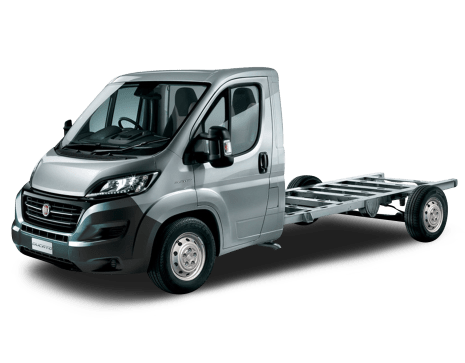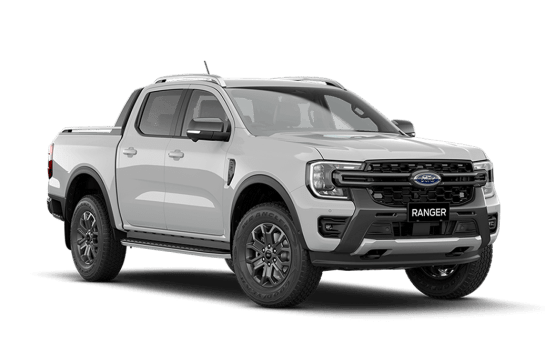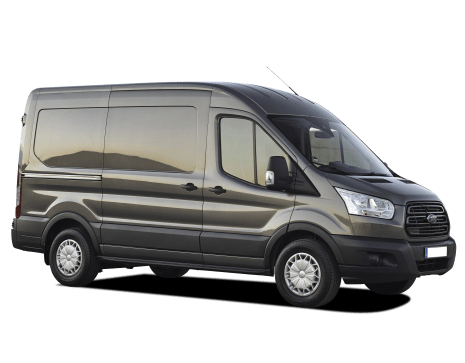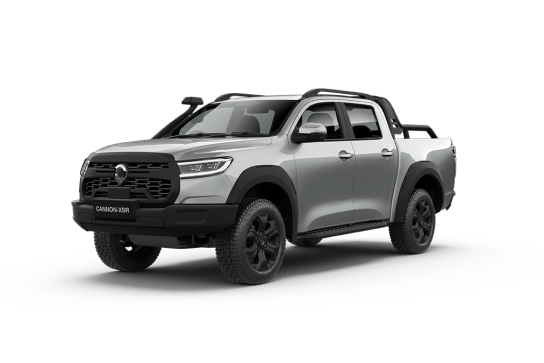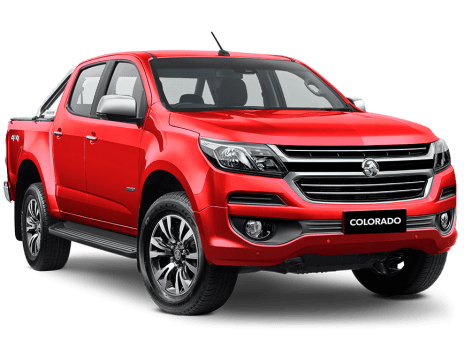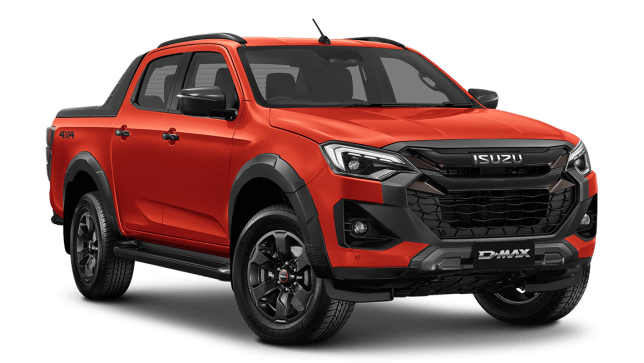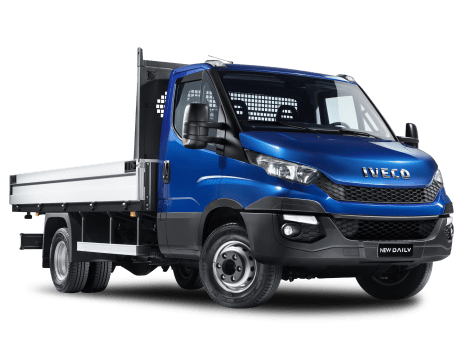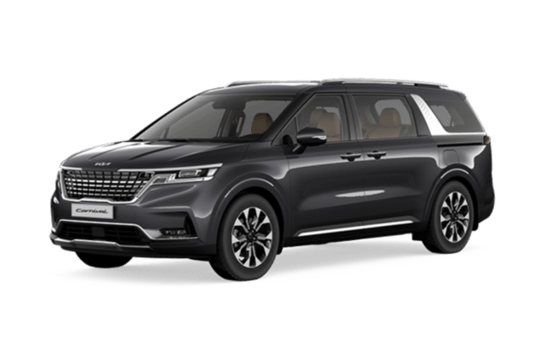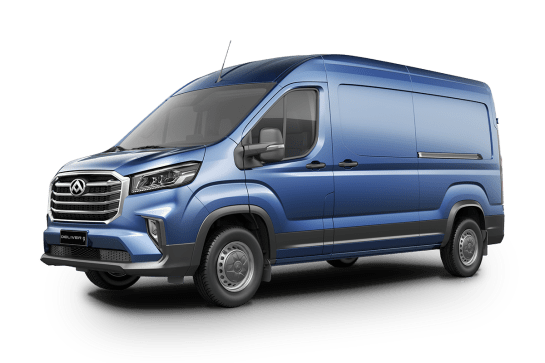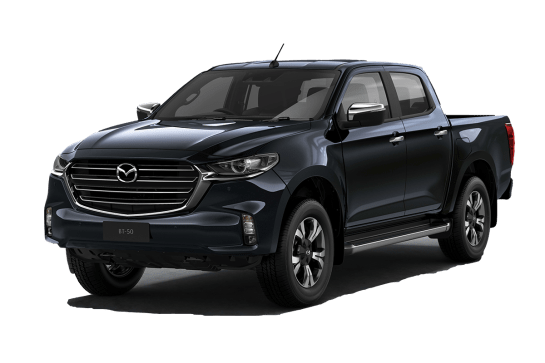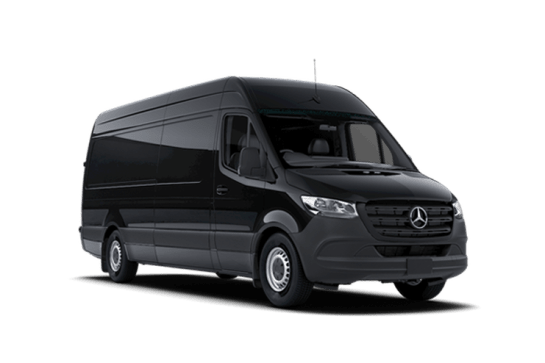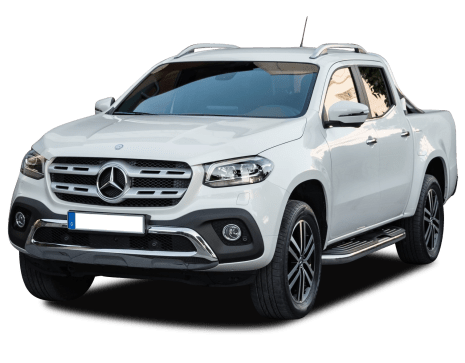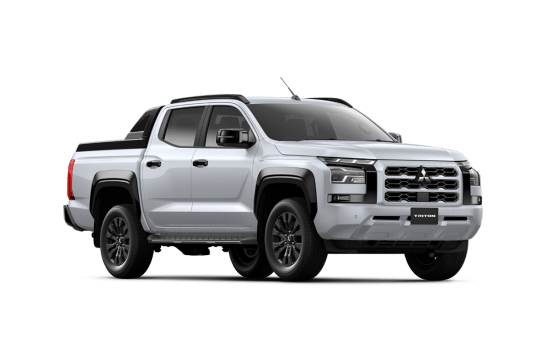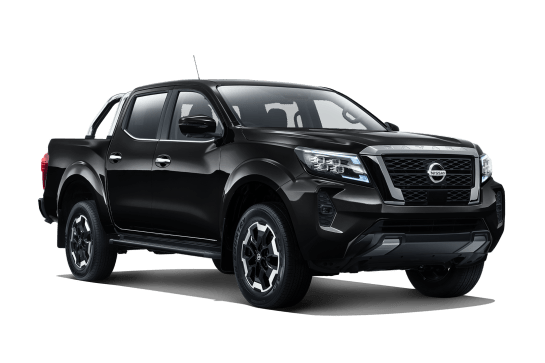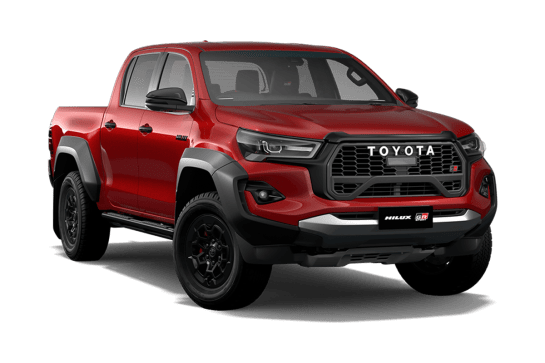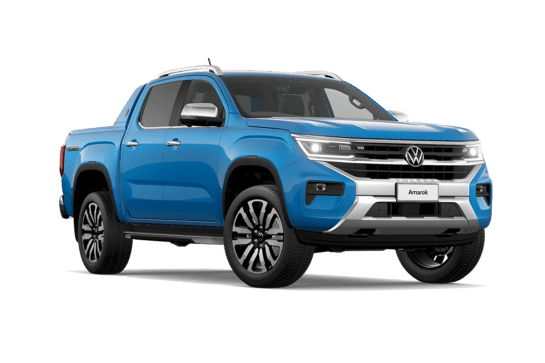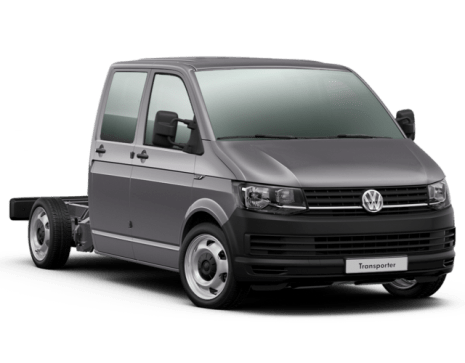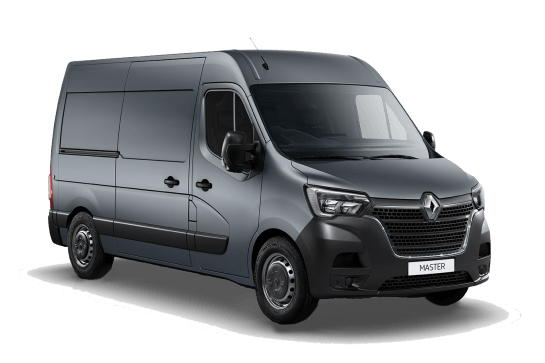
Renault Master VS LDV Deliver 9
Renault Master
Likes
- Effortless diesel engine
- Good value
- Improved interior a big step up
Dislikes
- Manual shift not the most positive
- Well behind rivals on safety
- No proper automatic option
LDV Deliver 9
Likes
- Low price
- Noise suppression
- Ride quality laden/unladen
Dislikes
- No cargo barrier
- No driver’s footrest
- Three-year warranty
Summary
Renault Master
The Renault Master range has been refreshed, and this was our first chance to see what changes have been made.
You should be able to tell just by the look of the 2020 Master that there’s a new design with a more modern looking front-end. And the inside has been thoroughly modernised, too.
But with contemporary rivals such as the VW Crafter and Mercedes-Benz Sprinter - both of which launched in all-new generation guises in 2018 - the question is whether the ageing, yet facelifted Master is worthy of consideration.
We spent a week with it - and covered plenty of kays in it - to find out.
| Safety rating | — |
|---|---|
| Engine Type | 2.3L turbo |
| Fuel Type | Diesel |
| Fuel Efficiency | 8.3L/100km |
| Seating | 3 seats |
LDV Deliver 9
There are currently 14 rivals competing for customers in the Light Duty or LD (3501-8000kg GVM) segment of Australia’s heavy commercial vehicle market. Business buyers and fleet operators are thick on the ground here and competition for their business is fierce.
Chinese brand LDV, a division of the huge SAIC Motor conglomerate which is now the seventh largest automotive company in the world, recently joined this battle with its new Deliver 9 van range that’s priced to entice. We spent a week aboard one to see how LDV’s claim of superior value stacks up when there’s work to be done.
Read More: LDV Deliver 9 2021 review GVM test
| Safety rating | — |
|---|---|
| Engine Type | 2.0L turbo |
| Fuel Type | Diesel |
| Fuel Efficiency | —L/100km |
| Seating | 3 seats |
Verdict
Renault Master6.4/10
If you’re after a budget-conscious offering in the large van segment, the Renault Master could be a really solid proposition. It falls short of the safety expectations set by its newer rival, though, and that’s something you might not be able to put a price on.
LDV Deliver 97.6/10
It has its flaws, like any vehicle, but it’s not as far away from segment leaders in terms of refinement and performance that its bargain-basement pricing might suggest. Whichever way you look at it, this is a lot of van for not a lot of money.
Design
Renault Master
The front-end styling of the Master has been modernised with a “robust” new look which sees it adopt a more upright nose with a bulkier grille, squared-off headlights (with LED daytime running lights as standard, along with halogen headlights).
There were no other changes made to the exterior, so if you see it side on or from the rear, you’d be hard pressed to tell if it's the new model.
This is the second facelift for this generation (X62) Master, which originated back in 2010. It is also offered in some markets as a Nissan, Opel, and Vauxhall. And this version certainly freshens up the appearance, though the practicality of the Master line-up remains unchanged.
That’s a good thing: you can still get the van as a short-wheelbase with low roof (L1H1), a mid-wheelbase with mid roof (L2H2), a long-wheelbase with mid roof (L3H2), or an extra-long-wheelbase with high roof (L4H3). There’s also the choice of a single cab-chassis Platform ute model, too.
Our test model is the L2H2, meaning dimensions of 5575mm long on a lengthy 3682mm wheelbase (giving it a 13.6-metre turning circle), while the width is 2070mm and the height is 2499mm. Too tall for car parks (and drive-thru windows, in this age of social distancing).
The good news about the height, though, is that it allows you excellent interior dimensions. The cargo hold of this version is 3083mm long, 1765mm wide (and 1380mm between the wheel-arches, enough for Aussie pallets to slide in easily), and the height is 1894mm inside. I’m six-foot tall (1820mm) and that meant I could safely step in and out of the cargo zone without fear of hitting my head. The load space is 10.8 cubic metres in this spec.
As you’ll see in the interior section, the cabin has been given a bit of attention too - you can see it in the images below.
LDV Deliver 9
If imitation is the greatest form of flattery then Ford should be blushing, because the Deliver 9 appears to draw a lot of exterior design inspiration from the Transit van. It’s a substantial vehicle, as they tend to be in this weight division, with a 3750mm wheelbase and 14.2 metre turning circle, length of almost 6.0 metres (5940mm) and width of 2466mm. Its 2535mm height excludes it from underground and shopping centre carparks with typical height limits of 2.2 metres.
The rear-wheel drive chassis construction is simple and robust, with MacPherson strut front suspension, multi-leaf live axle rear suspension with supplementary rubber cones to boost support of heavy loads, rack and pinion steering and four-wheel disc brakes. There’s also ample use of hard-wearing black plastic on lower body sections where most scrapes and dents appear.
The cargo bay is accessed by one kerbside sliding door and dual rear-barn doors with 180-degree opening. The walls are lined to mid-height and there’s no roof lining. Bright LEDs provide ample lighting and even though our test vehicle was not the high-roof model, there was enough headroom for tall adults to stand without stooping.
The cabin has a spacious and airy feel, even with a crew of three aboard, thanks largely to a banana-shaped dashboard with ends that curve towards the windscreen providing wide entry access and passenger legroom which is unusually generous for a commercial van.
The cabin has higher-grade look than you would expect at this price, with a tasteful two-tone blend of light/dark grey plastics and faux carbon fibre inserts on the dash along with comfortable, supportive seats with quality-feel fabrics.
However, there is room for improvement, as there’s no cargo protection for driver and passengers, no driver’s left footrest, crackly AM radio reception (too bad if you like talkback) and a poor-quality image projected by the reversing camera.
Practicality
Renault Master
Like all vans in this segment there are some cabin smarts that will make your life a lot easier if you spend a lot of time in the cockpit.
There are storage options aplenty, including overhead folder holders, a trio of dash-top storage caddies, dash-top cup holders, huge door pockets with bottle holders, some smaller storage cubbies near the shifter, and a glovebox that is, in the French tradition, good to hold a pair of gloves and not much else. This model had the dual passenger bench seat, with a hidden storage section underneath, and you can fold the middle seat down to form a desk platform with cup holders if that’s what you need.
Along with the storage smarts, the updated Master has seen some major changes in terms of infotainment intelligence, too. The new 7.0-inch MediaNav touchscreen system with Apple CarPlay and Android Auto is a welcome advancement for the brand, and during my time in the vehicle it proved simple to use and quick to react. The sound isn’t terrific, with just two speakers fitted, and I had to turn it up pretty loud to overcome the wind noise from this mid-roof model.
The driver’s seat is comfortable and offers decent adjustment, with height and lumbar adjustment. It’s easy to step up into the cab, too, despite there not being side grab handles. The driver also gets a new digital instrument display section on the redesigned dashboard, which includes a gear-shift indicator (but not a gear position indicator), and a digital speedometer and trip computer.
The steering wheel is new, too, and it’s much nicer than the old grainy plastic number in the pre-facelift version. Gone are the round vents across the dash and round plastic sections of the old model - now there are squared-off, more modern looking finishes that clearly aim to mimic the exterior’s now boxy-edged body.
In the cargo zone there are multiple tie-down hooks (eight on the floor, four on the side wall pillars), making for plenty of options to secure a load - though as can often be found with these eye-hook points, they can be a little too far inboard to make good use of, and in the Master’s case, there are no tie-down points rear of the wheel-arches. There is a 12-volt outlet in the back pillar, however.
LDV Deliver 9
Its 2358kg kerb weight and 4000kg GVM leaves a competitive maximum payload of 1642kg. It’s also rated to tow up to 2800kg of braked trailer but given the GCM figure (or how much you can legally carry and tow at the same time) is not published, we can’t tell you how much payload it can legally carry while towing that weight.
We struck a similar problem testing a G10 LDV van as far back as 2017, when LDV could not provide the GCM despite a direct approach to the factory in China. Why such a fundamental figure must remain secret is a mystery to us and could be a deal-breaker if you need to tow and carry.
The cargo bay offers a competitive 10.97 cubic metres of load volume. Its load floor’s 3413mm length, 1800mm width and 1366mm between wheel housings means it can easily carry two 1165mm-square Aussie pallets or up to four 1200 x 800mm Euro pallets, held in place by a choice of eight sturdy load anchorage points. There’s also a small cave above the cabin which is ideal for carrying straps, ropes, load padding, tarps etc.
There’s more than ample cabin storage too, with large-bottle holders and two levels of storage in each front door, numerous nooks of different shapes and sizes across the dashboard including a driver’s cup holder, plus a single glove-box and large overhead storage shelf with central sunglasses holder.
Pivoting the two passenger seat base cushions forward reveals another big storage area beneath them. The centre seat backrest also folds down to reveal a handy work desk on the back if it, which includes two cup holders. Overall, there’s smart use of space here.
Price and features
Renault Master
The 2020 update for the Renault Master saw prices adjusted to compensate for additional standard equipment now offered range wide.
You can read the full pricing and specs breakdown story here, but the standard goodies for the Master include: a new 7.0-inch touchscreen media system with USB input, Bluetooth, Apple CarPlay, Android Auto, sat nav and reversing camera display, a two-speaker sound system, rear parking sensors, 16-inch steel wheels with a full size spare fitted under the rear body, body-protective cladding, twin-view side mirrors with electric adjustment, electric windows, cruise control, air conditioning, remote central locking, halogen headlights, LED daytime running lights, and rear fog lights.
The list price for the L2H2 mid-wheelbase manual model used in this review is $47,490 plus on-road costs (RRP or MSRP), but Renault is advertising this exact spec for $47,990 drive-away, which is pretty compelling - you don’t even need to be an ABN holder for that discount.
The Master MWB van comes as standard with barn doors at the rear (270-degree opening), and a sliding side door on kerb side (left), while SWB models get 180-degree barn doors. It also features a steel bulkhead as standard, as well as a three-seat layout up front. There’s a handy lift-up base on the bench part of the seat, which allows you about 100 litres of hidden storage if you need it.
There are numerous options for buyers to customise their van to suit what they need. There are several packs to choose from, such as: the Trade Pack - wooden floor, full height timber wall lining, rear step, LED ceiling lights ($1600); the Business Pack - front fog lights, hands-free key card and push-button start, chrome exterior and interior trim finishes ($1000); and the Convenience Pack - auto high/low beam lights, lane departure warning, blind spot monitoring and front parking sensors ($1000).
You can option individual elements such as a driver’s side sliding door ($800), a driver’s suspension seat ($800 - removes the side airbag for the driver), a single passenger seat ($200 - N/A with driver suspension seat, adds passenger-side airbag protection), and if you choose RWD model there’s an available differential lock ($1000). Last but not least, you can have glazed dual sliding doors for $800, but only if you also option the Trade Pack.
Colour options include no-cost solid paint finishes in white, grey, dark blue, light blue, yellow, orange and red (the interesting colours will need to be pre-ordered). There are also three metallic paint options in grey, black or a silver/blue look, and the cost there is $1000.
LDV Deliver 9
Our test vehicle is the long wheelbase mid-roof, which is part of a three-model Deliver 9 range offering mixed wheelbase and roof height combinations. According to local distributor Ateco, the van’s unusual name has no real significance beyond the fact that in China it’s sold as the V90, so given Volvo’s existing V90 nomenclature, LDV changed the name to Deliver 9 in export markets.
Available only with a 2.0 litre turbo-diesel engine, the standard transmission is a six-speed manual or there’s the optional six-speed automatic like our test vehicle, which has an RRP of $44,726. Needless to say, that’s a massive saving compared to top-selling van rivals like the Ford Transit 350L LWB RWD auto at $54,090 and Mercedes-Benz Sprinter 314 CDI LWB RWD auto at $66,240.
Colour choice is limited to Blanc White or Pacific Blue. It comes equipped with 16-inch steel wheels and 235/65R16C tyres with a full-size spare, plus checker-plate-pattern rubber flooring throughout, LED cargo bay lighting, big truck-style power adjustable and heated side mirrors with indicators, seating for three including an eight-way adjustable driver’s seat with fold-down inboard armrest and an multimedia system with big 10.1-inch touchscreen, two USB ports and Apple CarPlay (but no Android Auto) to name a few. There’s even a rare and endangered cigarette lighter and ashtray.
LDV also offers a $1500 options pack which adds 236-degree rear door opening (except mid-wheelbase model), blind-spot monitoring, lane-change assist and remote keyless entry with push button start.
Under the bonnet
Renault Master
The power outputs and torque figures depend on the transmission you choose.
Despite the fact that both manual and automatic versions of the Master run a 2.3-litre four-cylinder diesel engine, there’s a difference between the engines: the version with the six-speed manual transmission is a twin-turbo unit, while the six-speed automated manual transmission makes use of a single-turbo diesel.
There’s not much in it when it comes to the difference in outputs, however.
The manual version has a slight horsepower advantage, with 120kW of power (at 3500rpm) and 360Nm of torque (at 1500rpm).
The automated manual has a maximum power of 110kW (at 3500rpm) and 350Nm of torque (at 1500rpm).
Both transmissions are geared the same across all six ratios, though from experience, the automated manual is best left at the showroom. While rivals offer conventional torque converter automatic gearboxes to appeal to a broader customer base globally, the French brand persists with its pernickety somewhat-auto option instead.
The majority of models in the Master range are front-wheel drive (FWD), but there are a couple of long-wheelbase rear-wheel drive (RWD) models available. None are all-wheel drive (AWD) or four-wheel drive (4WD).
You might be interested to note the weight specs for the Master range. There are too many variables to bore you with here, but the details on the L2H2 mid-wheelbase manual I tested, according to Renault Australia, are as follows: kerb weight - 1887kg; gross vehicle mass/GVM - 3510kg; payload - 1623kg; towing capacity - 750kg un-braked, 2500kg braked. The gross combination mass (GCM) is 6000kg.
LDV Deliver 9
LDV’s Euro 5-compliant 2.0-litre four-cylinder turbo-diesel produces 110kW at 3500rpm and 375Nm between 1500-2400rpm, which is adequate but not class-leading. It also offers a choice of Eco and Power driving modes and auto stop/start.
The six-speed torque converter automatic is smooth-shifting and easy to use. It also has the option of sequential manual-shifting which can be handy at times when hauling heavy loads, particularly in hilly terrain to save the transmission from continually hunting for gears.
Efficiency
Renault Master
There is no official combined fuel consumption claim figure stated by Renault, as the vehicle falls into the heavy commercial vehicle space.
But I can tell you it’s pretty impressive for fuel economy. I saw an average of just 8.5 litres per 100 kilometres over more than 1000km of testing - more than half of which was with the van loaded up with hundreds of kilograms of load.
With a 100-litre diesel tank, you could theoretically get about 1150km to a fill, and that’s with a mix of loaded and unloaded driving.
One thing, though: most vehicles have a graphic on their dashboard to show which side the filler neck is - you know, you see a fuel bowser and the filler is on the right, that means your vehicle’s filler is on the right. Not in the Master. It has a graphic with the filler on the right, but the actual fuel cap is on the left. And like most vans, you have to open the passenger door to fuel up.
Worried about AdBlue? No need - the engine used in the Master range is a Euro 5 unit, so there is a diesel particulate filter, but no urea after treatment setup to mention.
LDV Deliver 9
The dash display was showing an average combined figure of 11.0L/100km at the end of our 290km test, with the auto start/stop function disabled and about a third of that distance hauling maximum payload. Our figure crunched from fuel bowser and tripmeter came in at 12L/100km, so you could expect a real-world driving range of around 660km from its 80-litre tank.
Driving
Renault Master
I did a mix of driving in the Master over the week I had it, including more than 600km of unladen driving.
Why so many kays? I used it to move house, which meant I completed two “full” trips between Sydney’s inner-west and Cowra in the Central West of NSW, and two “empty” trips back to Sydney, as well.
I’ll get to how it drove with a load on board in the section below, but the unladen experience was pretty positive.
The engine and transmission are well teamed, and there’s a good amount of usable torque and very little lag to speak of.
As with this entire generation of engines - a derivative engine in a different state of tune is used in the Nissan Navara - the refinement is mostly good until you reach higher in the rev range, where it can get a bit noisy and clattery. But the best work is done down low in the rev zone anyway.
The manual shift action isn’t what I’d call “slinky”, more “clicky”. But it’s easy to row between gears as the action is light and the clutch isn’t too heavy, either. The gearing is generous, meaning you can saunter in sixth gear around 70km/h without the engine labouring too hard, and it’ll accelerate from there to freeway pace - provided you’re not going uphill.
There is a bit of ratio management required if you encounter a steep incline, but generally it’s a decently strong powertrain for its intended use - more on that below.
I’m always astounded about the steering and ride characteristics of vans of this size. Yes, it’s large, and yes, it can get blown around a little by crosswinds, and yes, you need to factor in the longish-wheelbase and larger turning circle that results from that… but it drives a lot smaller than it is.
The steering is direct and accurate, easy to judge at high or low speeds - which is great news when you’re parking (and there’s a good quality reversing camera and rear parking sensors, but you’ve just gotta remember the roof height, too).
The ride is adequate without a load on board, too. The independent McPherson strut front suspension copes well with changes in surface and bump control, though it can be a little bouncy at times. The rear suspension is a leaf-spring torsion beam setup, and it can be a little clumsy over road joins when unladen.
It also brakes well, with solid and trustworthy response from the four-wheel disc brakes at all speeds.
LDV Deliver 9
It’s pleasantly civilised to drive unladen, even on bumpy roads. With rock-hard tyre pressures (front 51psi, rear 71psi) recommended for load-carrying, the unladen ride remained disciplined and relatively smooth, so LDV has done a good job with the suspension tuning.
We were also pleasantly surprised by the low internal noise levels, not only in city and suburban driving but also at highway speeds. We can only assume that the load floor’s thick rubber flooring, which also covers the rear wheel housings, is effective in reducing the higher noise levels typically experienced in vans without cabin bulkheads like this one.
There are clear eye-lines to the door mirrors and the view through the rear doors using the central mirror is also uncluttered. There’s evenly-balanced elbow support for the driver between the fold-down inboard armrest and door moulding. However, we did miss having a left footrest.
With maximum torque available across a broad band between 1600-2400rpm, the engine displays good flexibility in city and suburban driving, even though it lacks the instant punch of rivals like the Transit’s stellar 2.0 litre EcoBoost engine when operating in its peak torque zone. The engine only needs 2000rpm at 100km/h and 2250rpm at 110km/h, but the degree of push required on the accelerator pedal to maintain it feels like it’s punching above its weight a little in either drive mode.
Our only major gripe is the adaptive cruise control. Usually these systems will automatically resume their pre-set speed, after being given clear road ahead following a lane change from behind a slower vehicle. However, our test vehicle required tapping the accelerator each time a lane change was made to resume the set speed. It also required this reset technique after downhill braking, so some refinement here would be welcome.
Safety
Renault Master
While there has been a safety revolution in the van segment in recent years led by Mercedes and VW, Renault has been left behind to a degree.
The Renault Master has never been put through NCAP or ANCAP crash testing. So there’s no safety star rating to speak of.
And it falls short of its chief rivals, as it doesn’t have any sort of auto emergency braking (AEB) or forward collision warning system at all.
It has a reversing camera and rear parking sensors, plus dual front airbags and driver’s side airbag protection (not passenger though?), and there are no curtain airbags either. But it has electronic stability control (ESC), electronic brake force distribution, and hill start assist with Renault’s Grip X-tend system that is designed to allow better traction in slippery situations.
You can option some safety technology into the manual versions of the Master, by way of the Convenience Pack. For $1000 it adds auto high/low beam lights, lane departure warning (not active lane keeping assist), blind spot warning (not rear cross-traffic alert), and front parking sensors.
I understand the argument that buyers shouldn’t have to pay for anything they don’t need, especially when it comes to business vehicles. But I hope that behind closed doors Renault is working furiously to improve the safety equipment offering as a matter of priority.
LDV Deliver 9
There’s no ANCAP required in the 3501-800kg GVM class but it comes well equipped for the money with AEB, lane-departure warning, reverse parking sensors and wide-view reversing camera, hill-hold assist, adaptive cruise control and stability control. There’s also driver and passenger front, side and curtain airbags. No cross-traffic alert but blind-spot monitoring and lane-change assist are available as part of the previously mentioned options pack.
Ownership
Renault Master
The Renault van range is covered by a warranty plan that isn’t as good as you’ll get from VW or Ford. That is, the Master (and Trafic and Kangoo below it) have a three-year/unlimited kilometre warranty cover, which is two years shorter than the best in the class.
Service intervals are business-friendly at 12 months/30,000km, with a capped-price service plan spanning the first three years/90,000km. The service price is $599 per visit, but keep in mind you will need to replace the coolant ($132) and brake fluid ($79) every 60,000km. There’s also an accessory belt replacement at 90,000km ($506).
If you service your van at Renault, you’ll also be eligible for up to four years of roadside assistance cover. From the showroom floor there is 12 months cover.
Concerned about issues, problems, recalls, questions, queries, complaints, or reliability issues? Check out our Renault Master problems page.
LDV Deliver 9
LDV’s national network of 82 dealers inspires more confidence than the three years/160,000km warranty, which is less than the major players – but then its purchase price is much lower too. Scheduled servicing is six months/5000km then 12 months/35,000km whichever occurs first and 12 months/30,000km after that. Capped-price servicing program of $1895 covers the first three years or 95,000km whichever occurs first.


